The IBM POWER8 Review: Challenging the Intel Xeon
by Johan De Gelas on November 6, 2015 8:00 AM EST- Posted in
- IT Computing
- CPUs
- Enterprise
- Enterprise CPUs
- IBM
- POWER
- POWER8
Taking a Closer Look At IBM's S822L
The S822L was mounted in the Xeon server dominated racks inside our experimental datacenter. The build quality of both the rails and server were apparent, a "locking mechanism" made sure the server was easy to mount without a screwdriver and was kept firmly at its place.
The system booted by using the Flexible Service Processor (FSP), which is comparable to the Baseboard Management Controllers as they are both components that allow you to manage and monitor your server thanks to the IPMI specification. The main difference with Xeon system is that the FSP and its related firmware and software is the only way you can control your system. There is no "BIOS" screen or BIOS configuration setup, everything has to be configured and booted via the FSP software. You could say that the "BIOS" and "BMC management software" are now integrated into one central firmware.
To power on the S822L, you have to access the FSP using the open-source IPMItool. Once the server is booted up, the "petitboot" bootloader of OPAL (the OpenPOWER Abstraction Layer firmware) takes over. It scans all bootable instances (disks, network, optical, etc.) for operating systems, and is similar to the GRUB bootloader. From there, you can install Linux like you would on an x86 system.
The cover was covered with a lot of interesting service information about the upgrading and replacing the hardware.
Once we removed the cover, lots of expansion slots became visible.
No less than nine hot plug (!) low profile PCIe Gen 3 slots are available. Four of them are x16, ready for some GPU action. Five are x8. Only one of the PCIe slots is used for the standard quad-gigabit Ethernet adapter. We also had one Emulex FC card installed.
Also installed were two PowerPC based SAS RAID controller(s), capable of RAID-6 and all common RAID levels, which connectto a dual backplane that offers 12 Small Factor Form (2.5 inch) drives. These drives can be SAS SSD or hard disks, which is a reliable but rather expensive storage choice. A DVD drive was also present, which allowed us to install Linux the old-fashioned way.
At the back we find two hot-swappable PSUs, four gigabit Ethernet interfaces, two USB 2.0 ports, an HMC dual-gigabit interface (an HMC is a hardware applicance that can manage several IBM servers) and one system port.
The server is powered by two redundant high quality Emerson 1400W PSUs.


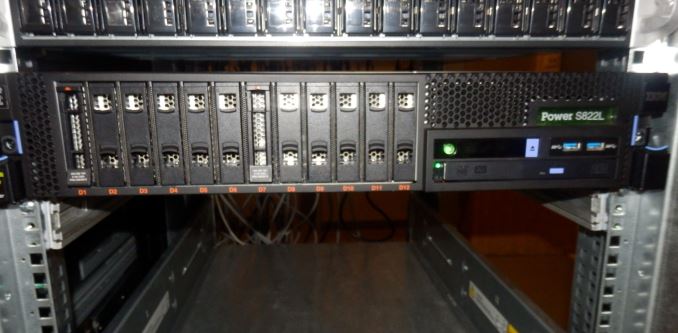
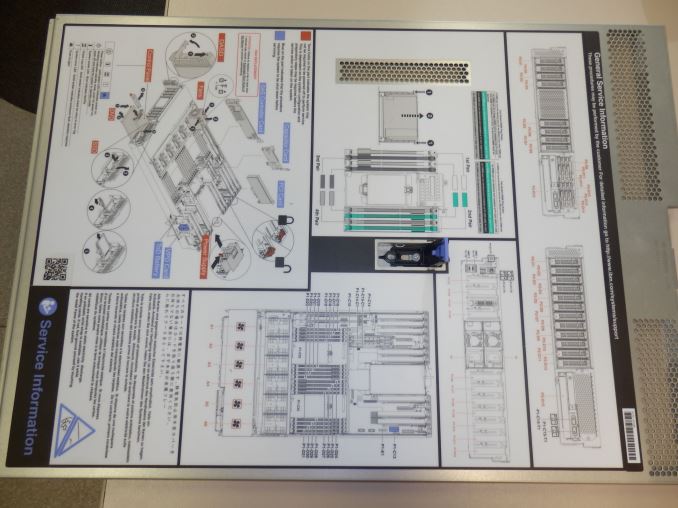
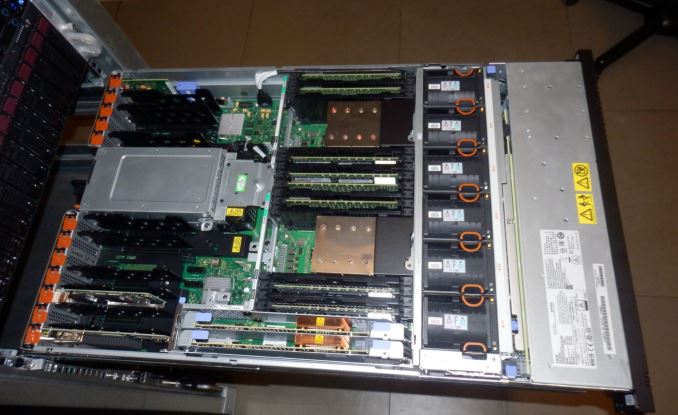
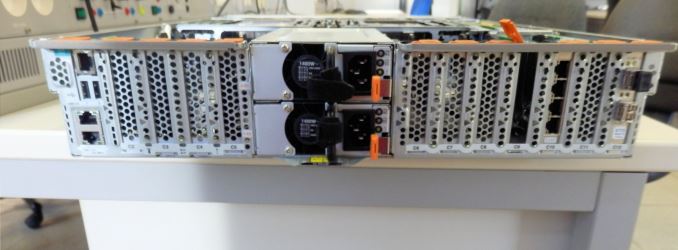
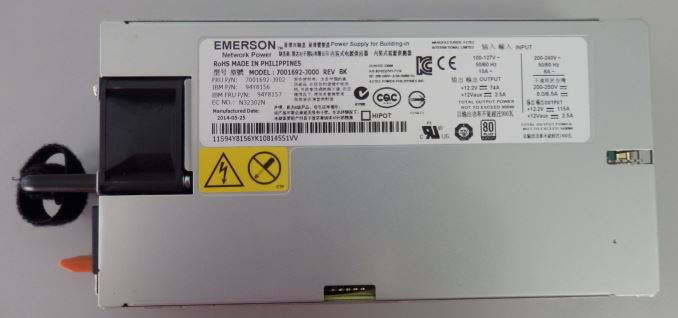








146 Comments
View All Comments
JohanAnandtech - Saturday, November 7, 2015 - link
Ok, Europe adopt the dot, but maybe the US can adopt the metric system like the rest of the world? :-)bitaljus - Saturday, November 7, 2015 - link
or better yet recode this site to see from what country u are visiting and use the appropriate denote thousands symbol, appropriate metric system and even time for the viewer. how meany time i was irradiated when i need to google something like this just to make it in local. and this is easy to do in the site natively. (P.S. Sorry for bad English, not native)nils_ - Wednesday, November 11, 2015 - link
The browser already sends a header with Accept-Language, which should be the preferred way to for the web site to determine locale. For example, I live in Germany so my browser will send en, en_UK, en_US, de and DE (this can be set somewhere in the settings). Now you can determine the language and other localisation based upon that, and there are tools where you can set the locale to then display dates, times etc.. based n that.Many sites instead use Geolocation based on the IP address, which can be really awkward when you travel to a country where you can't read the language.
ZeDestructor - Saturday, November 7, 2015 - link
Even within EU it's not consistent.. UK uses commas for thousands, dot for decimal (and that's why the US and most anglophone countries use the same setup), Germany, Netherlands and France on the other hand favour dots for thousands, commas for decimal, so you see it used there.. and in a great number of their former colonies where the language and culture has stuck.nils_ - Wednesday, November 11, 2015 - link
Dates / Time are even funnier, that's also extremely inconsistent and can be very misleading. Think for examle a date like 12/11/2015, in some countries it'll mean the 12th of November while in others it will mean the 11th of December, and sometimes even the 2015th of November in 11 AD ;)I remember reading on the GTA IV in-game "Internet" a travel guide to Europe that said the months here have 12 days but there are 30 months a year or something to that effect ;)
powchie - Friday, November 6, 2015 - link
let Johan do more reviews. been reading his stuff from late 90's and consider him the best then followed by Anand.Ryan Smith - Saturday, November 7, 2015 - link
Trust me when I say that if I could whip Johan any harder and make him work any faster I would be doing just that.;-)juhatus - Saturday, November 7, 2015 - link
When the Balrog showed up for work he had everyone fired.ruthan - Friday, November 6, 2015 - link
In summary should be something about software support, raw power is here, but software stack isvery limited.
PowerCPU is good for old legacy apps - SAP, Oracle etc.. but otherwise its dead end.
I would like to see comparision of IBM LPAR virtualization against Xeon Vmware solution, or Oracle / MySQL benchmark on power vs. Oracle benchmark on Xeon.
Server with Power even cant to run Crysis, or maybe some QEMU magic..
ruthan - Friday, November 6, 2015 - link
Pleas Ad edit button like other civilized sites, i was hurry when i wrote it.